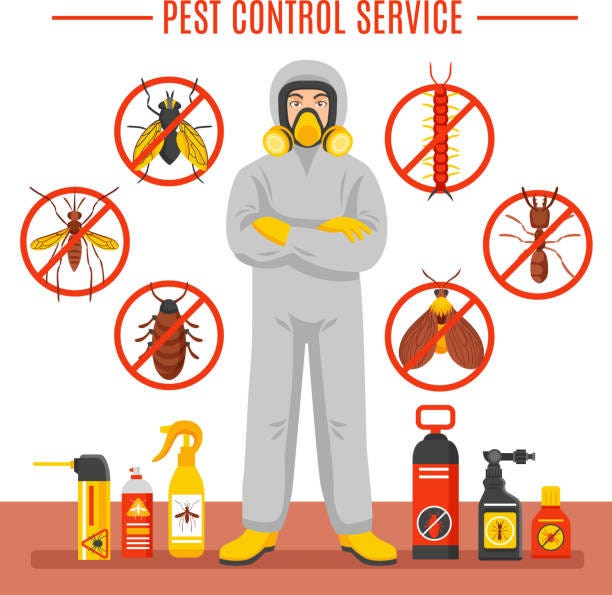Bed Insect Therapy Break Down: Contrasting Chemical Vs. Non-Chemical Solutions
In the realm of parasite control, specifically when dealing with the consistent concern of bed bugs, the selection between chemical and non-chemical treatment options can be a crucial one. Both approaches supply distinct advantages and disadvantages, influencing factors such as efficiency, safety and security factors to consider, and general price. By taking a look at the nuanced information of each approach, a more clear understanding of which path to seek in addressing a bed bug infestation can be achieved.
Efficiency of Chemical Therapies
Chemical treatments for bed bug infestations have actually been extensively acknowledged for their quick and powerful effectiveness in removing these insects. When thinking about the effectiveness of chemical therapies, it is vital to understand that they can offer a quick and detailed solution to a bed pest issue.
Additionally, chemical therapies have the advantage of providing recurring effects, implying that they can remain to get rid of bed bugs also after the first application. This residual activity is particularly beneficial in combating any kind of possible re-infestations. Additionally, the fast activity of chemical treatments can bring relief to people facing serious bed pest problems, permitting them to restore control of their home rapidly.
Safety Worry About Chemical Solutions
One vital facet that calls for careful factor to consider when using chemical solutions for bed bug therapy is making certain the security of occupants and the environment. Direct exposure to particular chemicals utilized in bed pest treatments can lead to respiratory system concerns, skin inflammation, or various other unfavorable responses, specifically in people with pre-existing conditions or sensitivities.
Moreover, the ecological effect of chemical services is an additional significant factor to consider. Some chemicals used in bed bug treatments might be hazardous to beneficial bugs, wild animals, and ecological communities if they seep right into the dirt or water supply. It is vital to utilize chemical treatments deliberately, following security standards, and thinking about less harmful choices to mitigate these risks and make certain the effective and safe monitoring of bed bug invasions.
Benefits of Non-Chemical Techniques
Taking into consideration the potential safety issues and environmental impact related to chemical solutions for bed bug treatment, checking out non-chemical strategies presents an appealing option with a number of distinctive advantages. Non-chemical methods use a much safer choice for families, specifically those with pet dogs, individuals, or youngsters sensitive to harsh chemicals. These methods eliminate the dangers of direct exposure to hazardous compounds, minimizing the capacity for adverse health effects. Additionally, non-chemical treatments are environmentally friendly, as they do not add to air or water air pollution, making them a lasting option for pest control.
In addition, non-chemical services can be effective in targeting bed pests, including hard-to-reach locations where chemical treatments might not penetrate. Techniques such as warmth treatment, vacuuming, vapor cleaning, and cushion encasements offer complete removal without the usage of damaging chemicals. Moreover, non-chemical approaches can be much less turbulent, requiring marginal preparation and enabling quicker reentry into dealt with areas. Generally, deciding for get redirected here non-chemical bed insect therapy techniques not only prioritizes safety and environmental management however additionally makes sure extensive and effective parasite control.
Limitations of Non-Chemical Treatments

Furthermore, non-chemical therapies commonly require several applications to attain successful obliteration. This can be lengthy and might not always guarantee total elimination of all bed bugs and their eggs, especially in hard-to-reach or hidden places.
In addition, the success of non-chemical therapies greatly counts on appropriate application and thoroughness, which can be testing for individuals without expert competence. Poor application of non-chemical approaches may result in insufficient obliteration, leading to persistent invasions and the demand for additional therapies.
As a result, while non-chemical therapies have their benefits, he has a good point it is important to recognize these restrictions and consider them when establishing the most efficient method for managing bed bug infestations.
Cost Comparison: Chemical Vs. Non-Chemical Options
Provided the restrictions connected with non-chemical treatments, a crucial facet to evaluate in the context of bed bug monitoring is the price contrast between chemical and non-chemical alternatives. Chemical therapies commonly entail the application of pesticides by experts, which can vary from $250 to $900 per area, relying on the intensity of the invasion and the size of the area to be treated. In comparison, non-chemical therapies like warm treatment or vapor can be extra pricey, with expenses ranging from $1,000 to $6,000 for a whole home. While the preliminary cost of chemical treatments might seem lower, numerous treatments may be called for to completely eliminate the problem, possibly raising the total expense. On the other hand, non-chemical alternatives may provide a more green and sustainable solution, although they can be cost-prohibitive for some people. Eventually, when thinking about the expense of bed pest therapy options, it is essential to consider my sources the in advance costs against the performance and long-lasting sustainability of the picked approach.
Conclusion

Considering the prospective safety issues and ecological impact associated with chemical options for bed insect treatment, checking out non-chemical techniques offers an appealing choice with a number of distinctive advantages.Provided the restrictions linked with non-chemical treatments, a vital facet to assess in the context of bed bug management is the price comparison in between chemical and non-chemical options. In contrast, non-chemical treatments like heat treatment or heavy steam can be much more expensive, with costs ranging from $1,000 to $6,000 for an entire home. While the initial cost of chemical treatments may seem lower, several treatments may be required to completely remove the problem, possibly boosting the general expense.In verdict, when contrasting chemical and non-chemical bed insect therapy choices, it is crucial to think about efficiency, safety and security, advantages, restrictions, and expense.